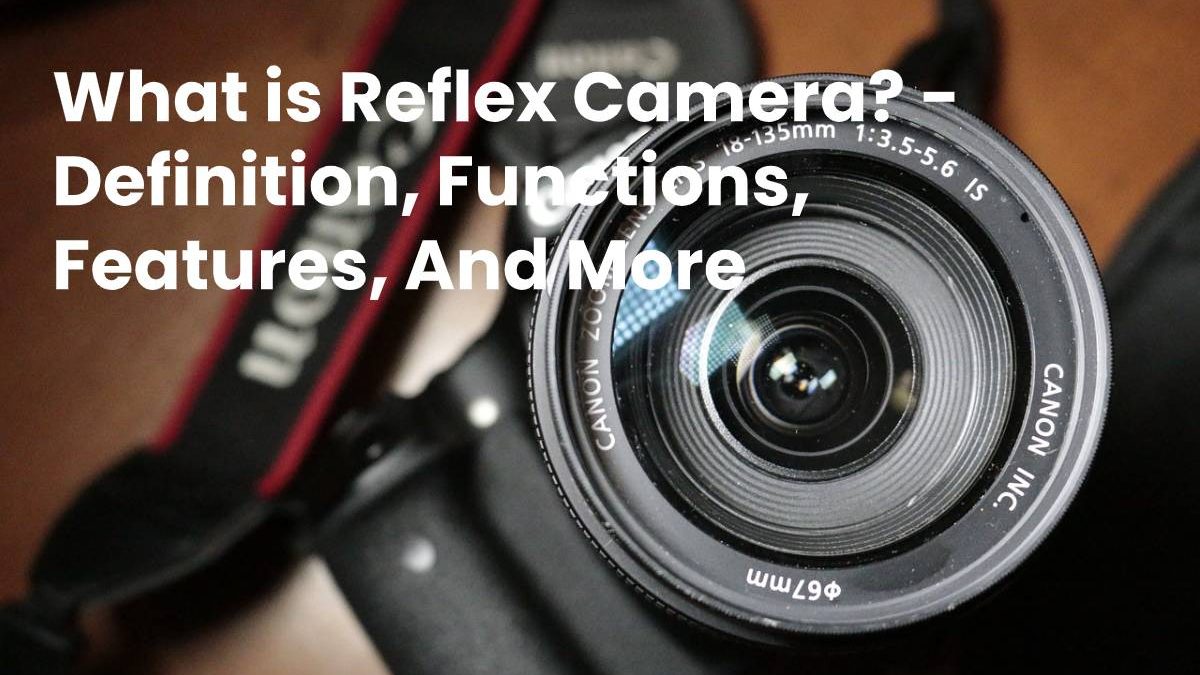Table of Contents
Definition Reflex Camera
The name of the single-lens reflex camera(SLR) comes from the fact that such cameras use a mirror that reflects (SLR) the light coming from the scene and directs it towards the viewfinder (towards the photographer’s eye).
When a shooting occurs, the mirror raises. That is, rotates upward so that the light can reach the electronic sensor (or the film in the case of analog SLR cameras).
In an SLR the scene that the photographer sees through the optical viewfinder is the same that the camera will take, there are no parallax errors since both the sensor and the viewfinder visualize the same frame from the same point of view (both collect the light that comes through the lens)
Once the mirror raises, the shutter is opened for a specified period by the photographer. So that it allows the correct amount of light to pass.
That light reaches the electronic sensor and gets transformed into an electrical signal and then a digital value (a number that indicates how bright each point of the image is).
How does Reflex Camera work?
The image that reaches the sensor gets inverted concerning the scene (the top one goes down, and the bottom one goes up). For the photographer to see the scene correctly, the optical viewfinder uses a pentaprism or a pentamirror with which the image that arrives from the lens can be inverted 180º. The mechanism of pentaprism is what gives it that hump or bulge look on the top of the reflex cameras.
Also read: What is SKU? – Definition, Functions, Benefits, and More
Features of a reflex camera
The DSLR cameras are practically the same as the analog cameras regarding the optical and mechanical parts.
Currently, a digital SLR camera has a series of minimum features:
Optical viewfinder
The photographer has a direct vision of the scene through the mirror and prism mechanism (pentaprism or pentamirror depending on the brand and model).
For many photographers, the optical viewfinder is essential, because it offers an immaculate view of the scene, directly through the lens. And for the fact of completely isolating and thus allow to focus attention exclusively on the frame, without distractions.
Dedicated phase detection focus system
This is a system with an independent sensor and a secondary mirror that depends on the primary mirror. It is only operational in photography (not in video). It is a high-speed autofocus system
Exchangeable Objectives
The camera itself is the ‘body,’ and the lens mounting on that body. The photographer can choose between different objectives, the one that best suits the scene he wishes to photograph.
Manual mode
Total control of different camera parameters
Sensitivity, shutter speed, and aperture of the diaphragm. It is what is known as manual mode. That gives the photographer the possibility to freely choose how he wants to take each photograph.
RAW format
All digital SLR cameras currently can record photographs in RAW format.
This format allows you to store image information as it exits the sensor, without processing by the camera and without loss of data by compression, etc.
Besides, the RAW format stores the parameters with which the image had taken.
RAW images are like the movie cynical(negative). You cannot publish it directly, first perform development, and then they can be capable of exporting to standard formats such as JPEG.
The main advantage of the RAW format is that it is the photographer who has control and can decide how to reveal and process his image.
In English, SLR cameras are familiar as DSLR: Digital Single Lens Reflex
In general, SLR cameras are the most complete and advanced in:
- Image quality
- Focus
- Ergonomics (grip, buttons, and controls)
- Functions
And supports for the photographer, battery autonomy, available optics.
Also read: What is Geometry? – Definition, Origin, Terms, and More
Kamran Sharief
Related posts
Sidebar
Recent Posts
An Inside Look Of Paraulogic
Introduction Welcome to the exciting world of Paraulogic! Are you ready to dive into a linguistic adventure and put your…
Empowering Artists with Cryptocurrency: A Guide to Selling Art Using NFTs
In the ever-evolving landscape of the art world, artists are constantly seeking innovative ways to showcase and monetize their creations….



